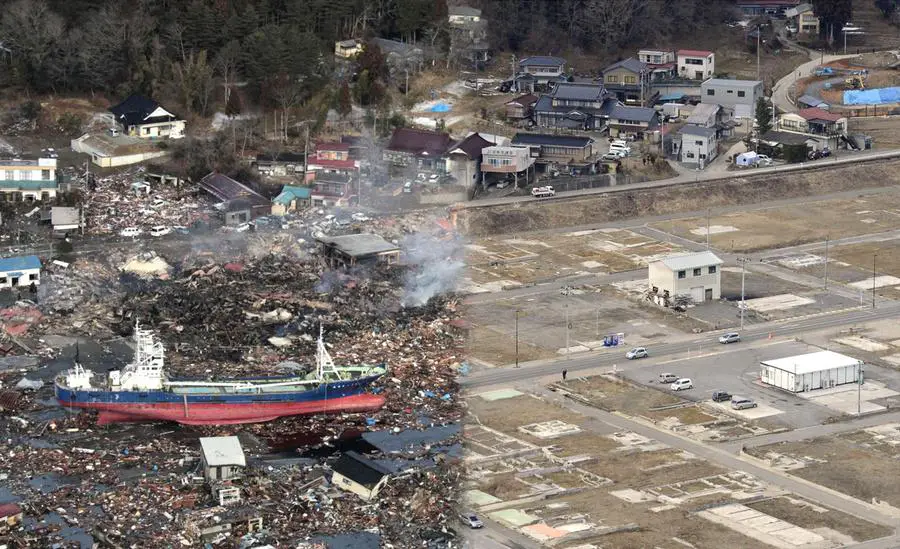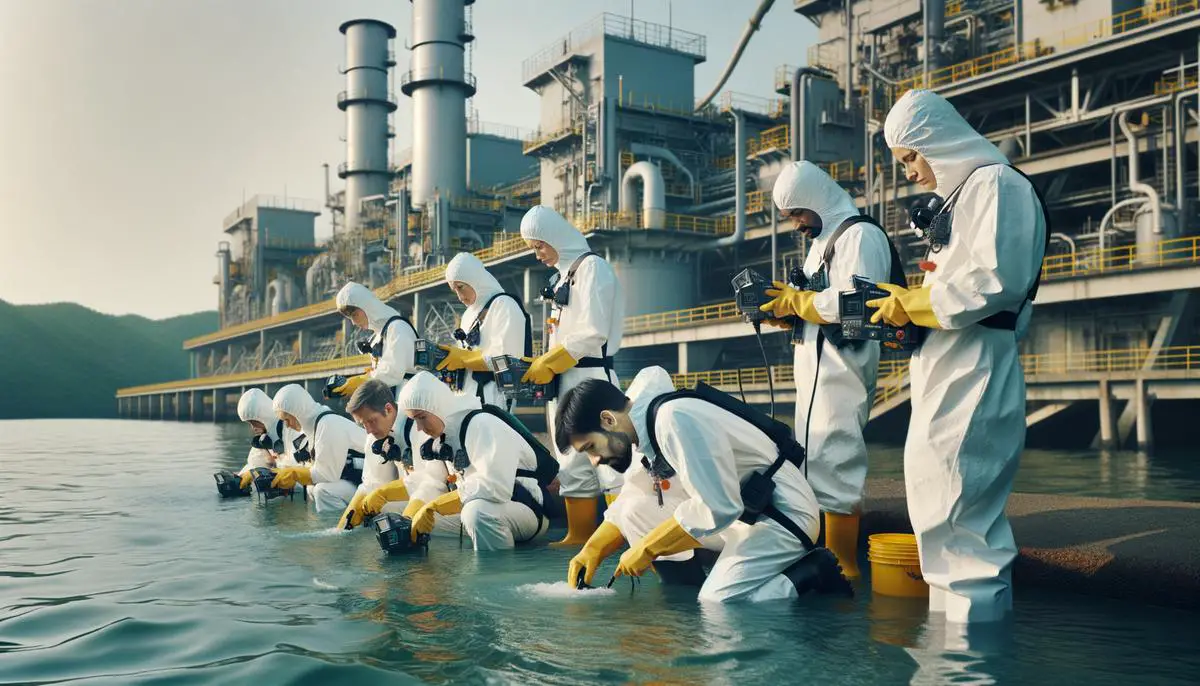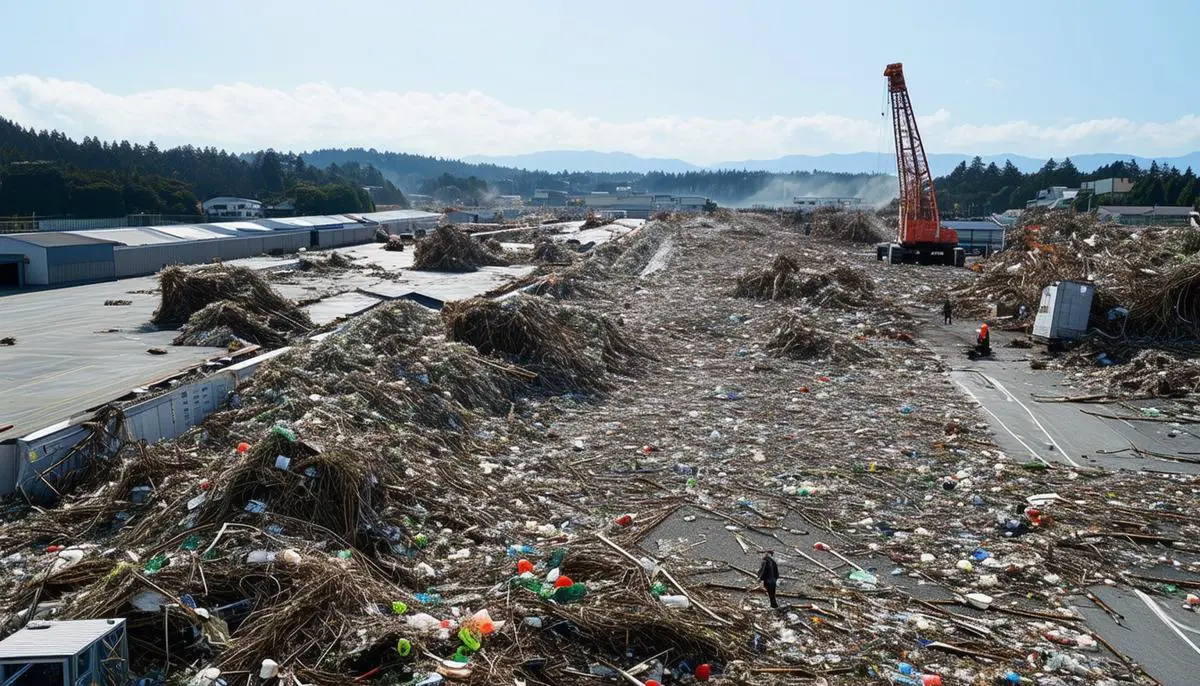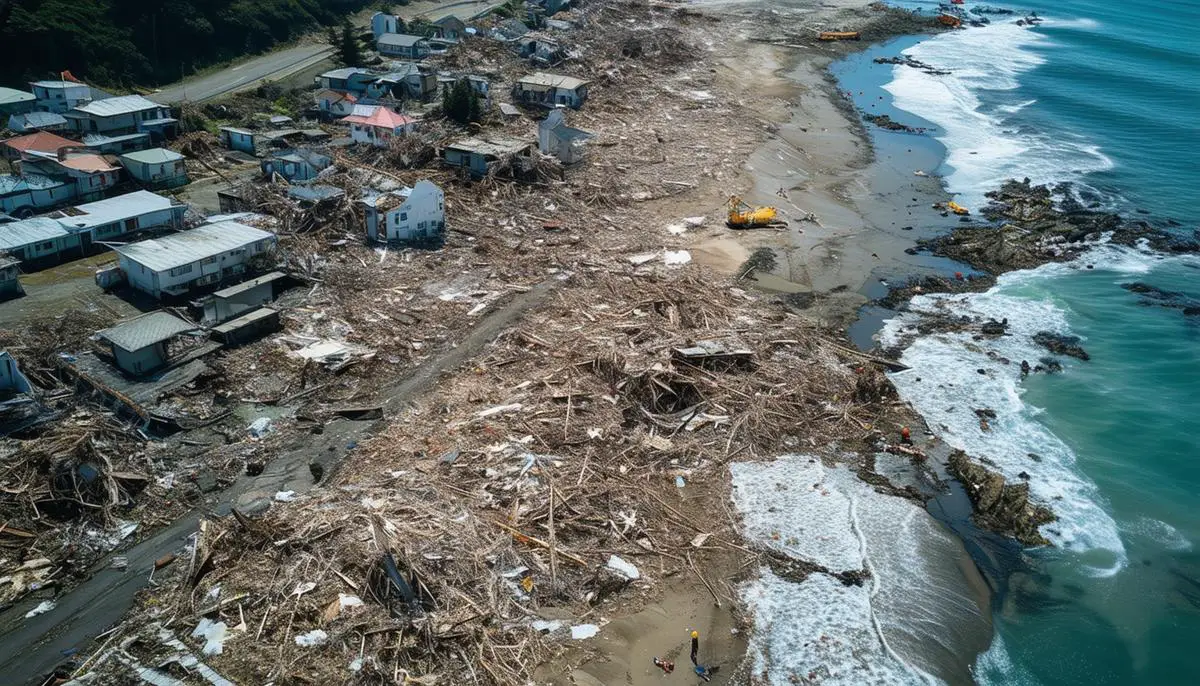Environmental Impact of the 2024 Japan Tsunami
The January 1, 2024, tsunami along Japan's west coast caused significant environmental damage from the Noto Peninsula to Wajima City. Coastal ecosystems were directly impacted, with beaches inundated with debris and saltwater intrusion altering groundwater salinity, affecting agricultural productivity.
Marine life faced severe disruption due to habitat alteration, pollution from debris, and toxins like microplastics and heavy metals. This scattered fish populations and disrupted breeding grounds. Underwater obstacles created by debris and broken structures destroyed coral reefs and disrupted natural flow.
Soil contamination emerged in areas like Ishikawa Prefecture, with saltwater invasion rendering previously fertile soil unsuitable for crops. This challenges local agriculturists who must deal with failing salt-sensitive crops and employ costly, time-consuming desalination efforts.
The Japanese Red Cross reported over 120 hectares of land inundated by the tsunami. In urban centers like Wajima, the earthquakes and tsunami left nearly two million tons of disaster waste. Contamination of water sources is a primary concern, with many areas struggling to restore regular water supplies weeks after the event.
Prof. Awadhesh Jha highlighted the vulnerability of these coastal zones to repeated seismic activities. The event serves as a reminder of long-term contamination risks, echoing past tragedies like Fukushima Daiichi.
Reports show Wajima's coastline extended by 820 feet, reshaping local geographies. Officials face the task of determining how rebuilding should account for this reshaped landscape while protecting against future quakes and tsunamis.
Critical habitats along the coastline may take decades to recover—if at all. Historical sites and cultural landmarks were also affected, raising concerns about cultural loss for communities already dealing with economic and social upheavals.
The quake and tsunami have underscored the need for Japan to re-evaluate how to secure its environmental and infrastructural future in the face of inevitable natural disasters. This event highlights the complex interplay between nature's forces and human preparedness.

Long-term Risks of Radioactive Contamination
The long-term risks of radioactive contamination are significant, particularly with the 2024 decision by the Japanese government to release stored radioactive water from the Fukushima Daiichi power plant into the ocean. This release introduces complex challenges given the region's susceptibility to future seismic events.
Environmental Science and Technology journal's recent publication has raised concerns about tritium, the primary radionuclide with a half-life of 12.6 years. The absence of conclusive data on the long-term effects of tritium release complicates assurances of safety. The unknown impact on both environmental and human health demands stringent, continuous monitoring.
The release underscores a balance Japan must strike between mitigating immediate dangers of unchecked radioactive storage and managing potential long-term environmental repercussions. Prof. Awadhesh Jha and colleagues emphasized the multifaceted nature of radioactive water's interaction with broader environmental stressors like hypoxia and microplastics.
With over one million tons of radioactive water at stake, this move stirs scientific debates and public apprehension. Researchers have emphasized the need for regular monitoring to detect even subtle changes in marine biology, sediment quality, and water chemistry.
The potential for genetic mutations in marine life can disrupt entire food webs. Studies have indicated tritium's adverse effects on fish DNA, influencing both their physical attributes and reproductive capabilities. Such consequences ripple across the food chain, eventually affecting human populations reliant on marine resources.
Japan faces the task of balancing technological advancement with a precautionary approach rooted in scientific rigor and public accountability. Addressing these challenges head-on, with constant evaluation and transparent reporting, can help in local recovery and offer insights to global environmental strategies dealing with nuclear contamination in seismically active regions.
Experts recommend creating an adaptive management framework that incorporates lessons from past mishandlings and future-proofs policies against impending natural disasters, ensuring a safer, resilient path forward for both environment and population.

Challenges in Post-disaster Waste Management
The January 2024 disaster left Japan confronting an immense waste management challenge, with an estimated 2.44 million tons of debris. This volume parallels the debris generated by Hurricane Katrina, emphasizing the magnitude of the task ahead in sorting, removing, and disposing of the waste.
One pressing issue is the acute shortage of land for waste disposal, exacerbated by Japan's dense population and limited geographical space. Traditional landfill options are constrained, necessitating innovative solutions. Some communities have turned to temporary storage sites, but these are merely stop-gap measures.
Key Strategies for Waste Management:
- Recycling and resource recovery
- Sorting metal fragments and timber for repurposing
- Balancing immediate clean-up needs with long-term sustainability
- Implementing the "Higashi-Matsushima method" for comprehensive debris management
The United Nations Environment Programme (UNEP) highlights that waste disposal operations carry significant environmental footprints. Improper handling can lead to soil contamination and adverse impacts on local water supplies, affecting both human and ecological health.1
The Japanese Government grapples with ensuring the seamless operation of critical infrastructure, which the waste impedes. Roads clogged with rubble hamper relief efforts and supply chain logistics. Deploying heavy machinery to clear pathways is time-sensitive, but coordination across various agencies complicates the task.
In urban centers, buildings constructed before modern seismic standards suffered significant structural damage, particularly those made from traditional wood. These materials are more challenging to repurpose due to degradation and potential chemical treatment residues.
The necessity of environmentally responsible reconstruction is crucial. UNEP emphasizes that reconstruction practices need to be environmentally sustainable to avoid long-term ecological harm. Ecosystem restoration, green architecture, and sustainable urban planning represent critical forward-thinking strategies to mitigate environmental impact.
Overall, the post-disaster debris management landscape demands a confluence of rapid response, strategic planning, and sustainability concerns. By integrating lessons from past events and leveraging innovative practices, Japan can address these formidable challenges to restore and renew both its communities and natural environments.

- United Nations Environment Programme. Disaster Waste Management Guidelines. Geneva: UNEP; 2011.
![]()
